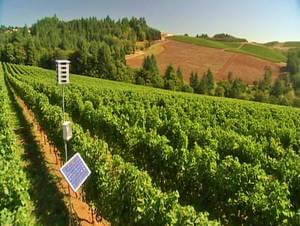For many farmers, the damage caused by bird pests in their crops has enormous economic repercussions. In other cases, such as small gardens, the damage caused by birds can be more limited. In both cases, it is advisable not to ignore the problem and to implement effective and profitable solutions for keeping birds away from crops as soon as possible.
In this article, we will learn:
- Which bird species attack our gardens and crops the most.
- Which crops are most attacked by birds. And when the damage occurs.
- What are the best methods for keeping birds away from crops.
Bird species that attack crops the most
To keep birds away from crops, the first and most important step is to identify which bird species are causing the problem. Below is a summary of the main birds that attack gardens and crops:
Starlings
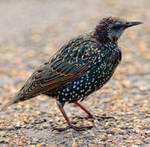
Starlings gather in large flocks and are a serious problem for our fields. When a flock of starlings attacks fruit trees, vineyards, olive groves, or cereal fields, they can literally devastate the harvest.
If you need to keep starlings away from your garden or crop, we recommend the following articles:
- Differences between starlings, and blackbirds. And how to keep them away.
- How to keep starlings away from fig trees.
- The Government of La Rioja acquires BirdGard sonic bird repellents.
- Experience of the CSIC – Spanish National Research Council – with different methods for keeping birds away from vineyards.
- Iberdrola reference – Keeping flocks of starlings away from medium voltage towers.
- Reference from José Luis López Budia, Farmer in Cifuentes on how to keep starlings away from cherry trees and woodpeckers away from almond trees.
- Experience of one of BirdGard Iberia’s clients with the bioacoustic repellent Bird Gard Pro, for getting rid of starlings in their tourist complex in Mahón.
- Check other Customer References from BirdGard Iberia.
Crows, Magpies, Rooks, and Jays
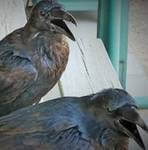
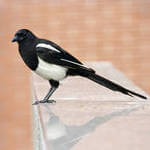
Crows, magpies, rooks, and jays are highly intelligent birds that cause significant damage to cereal fields, cornfields… They also cause losses in fruit trees, where they eat buds and fruits at different stages of ripening.
If you need to scare away crows or magpies, we recommend the following articles:
- How to prevent crow attacks in cornfields.
- How to scare away magpies.
- Experience of Floren, a livestock farmer in Udabe (Navarra) on how to scare away crows from cornfields.
- Mamen Sánchez shares her experience of how they managed to get rid of crows that entered the warehouse the company has in an industrial estate near Zaragoza.
Sparrows and Pigeons
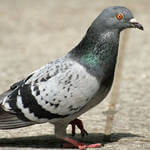
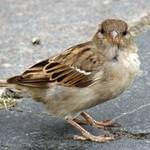
Sparrows usually attack vineyards, olive groves, and fruit trees. Pigeons are not just city rats. Pigeons and Eurasian collared doves also attack cereal fields and other crops.
- If you need to scare away sparrows, we recommend the article: “How to effectively scare away sparrows“.
- For good advice on how to scare away pigeons, don’t miss the article about “How to scare away pigeons“.
- The article “How to remove birds from a warehouse” explains Inasur – Industria Avícola Sureña S.L’s reference for expelling pigeons and sparrows from their warehouses.
Argentine and Kramer’s Parakeets

Argentine parakeets and Kramer’s parakeets are very aggressive birds that live in large flocks. They look for orchards and crops to feed on and return to towns and cities to sleep. Being very aggressive birds, they are displacing native species and are becoming a pest.
Which type of crops do birds attack and when do they do it
Birds attack isolated crops more often, as there are few alternative food sources in the area.
Birds also more frequently attack crops that are near trees or forests, as they use these trees to rest, have a good view of the area, and protect themselves.
On the other hand, birds attack early-maturing crops more, or very late-maturing crops. At these times there is less food in the fields and therefore the pressure from birds on such crops is much greater.
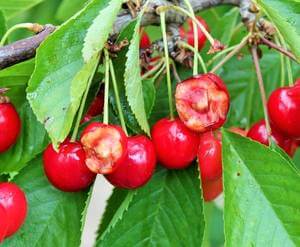
If from the experience of the previous campaign you already know that your orchard or crop is attacked by birds, our recommendation for the next season is to set up a system to protect your crop from birds at least two weeks before you expect them to arrive.
Install a system to protect your crop from birds two weeks before the fruit ripens or before cereal seed sowing. It is much more effective to do it this way. You will prevent birds from attacking your crop from the very beginning. Otherwise, you will have to scare the birds away from the orchard once they are already inside and feeding.
The best method to scare away birds from crops
In a previous article, we introduced the 4 main methods to protect crops from birds. In this article, we will focus on what we believe is the best method to scare birds away from the orchard: sonic bird repellers.
Acoustic disturbance for birds is a proven effective method to scare birds away from an orchard or crop. However, keep in mind that it is virtually impossible to scare 100% of birds away from a crop 100% of the time. Sonic bird repellers aim to scare away most birds from a crop, at a much lower cost than other bird control methods.
What is the leading brand for scaring birds away from the orchard?
Among the sonic bird repellers available on the market, the leading brand for scaring birds away from crops is the American company Bird Gard.
To achieve maximum effectiveness against birds, Bird Gard researchers have developed a technology that mixes on a sound chip or card: electronic harassment sounds, distress calls of the bird species we want to scare away, and sounds of their predators.
Therefore, the BirdGard bioacustic bird repellers come configured with a sound chip or card that is specific to the type of birds we need to scare away.
Let’s review the main bird species that attack crops and see which sound card is suitable for scaring these birds away from orchards:
- To scare away starlings from your orchard, use Chip #61
- If you need to scare away crows, you can choose any of these three chips: Chip #49, Chip #86, Chip #171
- To scare away magpies, use chip #66
- If you need to scare away carrion crows, contact us and we will explain the ideal solution. This case is more delicate…
- To scare away jays, you can use Chip #22
- If you need to scare away sparrows, choose Chip #62
- To scare away pigeons, the best choice is Chip#35
- For scaring away Argentine parrots and Kramer’s parrots, you need Chip #69
- To scare away woodpeckers, we recommend Chip #11
Bird Gard bird repellers play the sounds randomly. That is, the sounds are played in different patterns, different sound combinations, different frequencies, and through different speakers. All of this helps reduce the likelihood of birds becoming accustomed to the sounds. And excellent results are achieved.
There are basically four models of Bird Gard bioacustic bird repellers depending on the size of the orchard or crop we want to protect against birds. Visit the BirdGard Iberia website to see all the models in detail or watch the following manufacturer video.
How to Keep Birds Away from Crops – Conclusions
We hope that this article about how to keep birds away from crops has been useful to you. You can get all the recommended products in this article at the BirdGard Iberia online store.
If you have any additional questions, or are unsure which solution to apply in your case, please do not hesitate to contact BirdGard Iberia. One of our experts will advise you free of charge on the best solution for your specific case.
